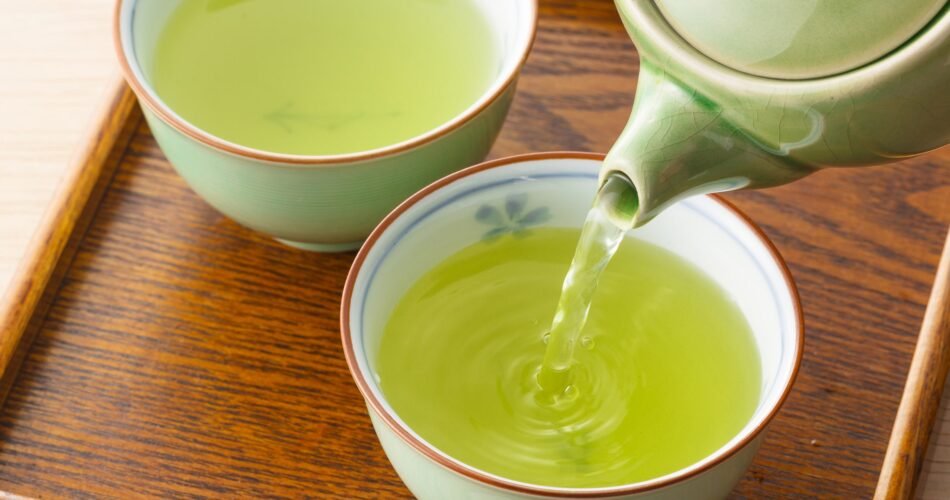What does Green Tea taste like? It’s a question I’ve heard countless times, and it’s one that deserves attention given the tea’s immense popularity worldwide. As someone with a deep affection for this aromatic beverage, I’ll provide an insightful answer to this seemingly simple question.
What Does Green Tea Taste Like? The Answer
In my experience, the taste of Green Tea can be somewhat grassy, with a slightly astringent aftertaste that lingers on the palate. It often has a gentle, mildly herbal flavor, though its profile can vary from sweet and floral to nutty or seaweed-like, depending on the variety. Imagine a quiet morning dew, a subtle hint of earthiness with a whisper of freshness, and you’re close to capturing the essence of Green Tea. This refreshing simplicity is appealing to both children and adults, so it’s not just a beverage but an experience.
People are curious about the taste of Green Tea for a myriad of reasons. Its celebrated status in health and wellness circles has made it a subject of fascination. The growing trend of seeking natural and organic dietary options has led many individuals to explore this ancient brew. Furthermore, as the western world continues to embrace Asian culture, the desire to understand and appreciate Green Tea’s role in historical and contemporary life has grown.

Variations in Taste of Green Tea
The flavor profile of Green Tea can dramatically shift depending on where it’s grown. The soil, climate, and topography of regions such as Japan, China, and India all leave their mark on the tea, shaping its character and taste. Japanese varieties, like Sencha, often boast a vibrant, grassy taste, while Chinese Green Teas, such as Longjing, might have a smoother, more roasted flavor.
Seasonal variations also play a crucial role in the taste of Green Tea. Tea picked during the first flush of spring typically yields a more delicate flavor and lighter color, whereas leaves harvested later might produce a stronger brew with more pronounced bitterness. These nuanced differences are part of what makes drinking Green Tea a unique and personal experience every time.
Nutritional Benefits of Green Tea & Impact on Taste
I find the health benefits of Green Tea are undeniable. It’s brimming with antioxidants, boasts anti-inflammatory properties, and has been linked to a host of positive effects, including improved brain function and heart health, reduced risk of certain cancers, and even potential aid in weight loss. These health benefits are a substantial reason behind its global endorsement.
It’s interesting to consider how the health aspects of Green Tea might influence perceptions of taste. In my case, knowing that I’m indulging in a cup of wellbeing adds a psychological sweetness to each sip. For some, the acquired taste of Green Tea becomes more appealing with the understanding of its health-giving properties.

Green Tea in Culinary Uses
Green Tea is not just a warm cup to cherish; it also finds its way into many culinary creations. I’ve spotted it as an ingredient in everything from delicate desserts to robust marinades. It can elevate a dish with its subtle flavor profile or serve as a base for a vibrant concoction like a matcha latte, popular for its bright color and energizing qualities.
In my kitchen adventures, I’ve found that Green Tea’s unique flavors can also complement other ingredients by contributing a level of depth and complexity. For example, pairing it with citrus notes in a dish can create a refreshing and aromatic harmony. Whether it’s in the form of matcha powder sprinkled onto a latte or steeped leaves infusing a broth, Green Tea is a versatile player in culinary crafts.

Acquiring and Preparing Green Tea
Green Tea is readily available in various forms, from bagged to loose-leaf, and even powdered as matcha. When seeking out Green Tea, I look for options that are organic and sustainably sourced. Additionally, selecting a good quality tea is crucial for the best flavor outcome; freshness is often evident in the vibrancy of the leaves and the aroma they release upon being steeped.
To further enhance the enjoyment of Green Tea, I recommend experimenting with pairing it with complementary flavors. Honey or lemon can be added to a freshly brewed cup to add sweetness or zest. In cooking, fresh herbs like mint or lemongrass can be paired with Green Tea to craft a sophisticated and aromatic blend.

Final Words
In the end, if you were to ask me, “What does green tea taste like?” I would say that its distinct palate is both refined and multifaceted. It’s this unique and adaptable flavor that has made it a cherished beverage across cultures. What does Green Tea taste like? It tastes like tranquility, health, and history, all steeped into one exquisite cup. And just like any good tale, the ending note of every sip leaves you wanting more, eager to explore the depths of its next brew.

